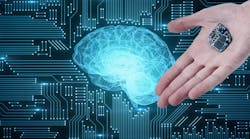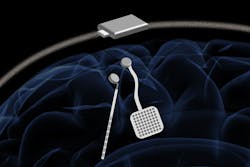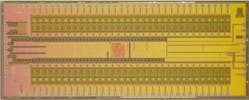A new neurostimulator developed by engineers at UC Berkeley can listen to and stimulate electric current in the brain at the same time, potentially delivering fine-tuned treatments to patients with diseases like epilepsy and Parkinson’s. Dubbed the Wand (for wireless artifact-free neuromodulation device), it works like a “pacemaker for the brain,” monitoring the brain’s electrical activity and delivering electrical stimulation if it detects something amiss.
Neurostimulators can be extremely effective at preventing debilitating tremors or seizures in patients with a variety of neurological conditions. But the electrical signals that precede seizures or tremors can be extremely subtle, and the frequency and strength of electrical stimulation required to prevent them is equally touchy. It can take years of small adjustments before doctors can program the devices to provide the best treatment.
In a proposed device, two of the new chips would be embedded in a chassis located outside the head. Each chip could monitor electrical activity from 64 electrodes located in the brain while simultaneously delivering electrical stimulation to prevent unwanted seizures or tremors. (UC Berkeley images by Rikky Muller)
Wand learns to recognize signs of tremors or seizures and adjusts the stimulation parameters on its own to prevent the unwanted movements. And because it is closed-loop, meaning it can stimulate and record simultaneously, it can adjust these parameters in real-time while it is providing stimulation.
Wand records electrical activity on 128-plus channels, or from 128 points in the brain, compared to eight channels in current closed-loop devices.
Simultaneously stimulating and recording electrical signals in the brain is much like trying to see small ripples in a pond while also splashing your feet—the electrical signals from the brain are overwhelmed by the large pulses of electricity delivered by the stimulation. Currently, deep brain stimulators either stop recording while delivering the electrical stimulation, or else record at a different part of the brain from where the stimulation is applied.
The Wand chip is designed with custom integrated circuits that can record the full signal from both subtle brain waves and strong electrical pulses delivered by the stimulator.
Researchers at Cortera Neurotechnologies, Inc., led by Muller, designed the Wand custom integrated circuits that can record the full signal from both the subtle brain waves and the strong electrical pulses. This chip design lets the stimulator subtract the signal from the electrical pulses, resulting in a clean signal from the brain waves.
In collaboration with the lab of electrical engineering and computer science, the team built a prototype with wireless and closed-loop computational capabilities that can be programmed for use in a variety of research and clinical applications.
In experiments, subjects were taught to use a joystick to move a cursor to a specific location. After a training period, the Wand device was could detect the neural signatures that arose as the subjects prepared to perform the motion, and then deliver electrical stimulation that delayed the motion.
Here are the custom integrated circuits that controls the neurostimulator.
“While delaying reaction time is something that has been demonstrated before, this is, to our knowledge, the first time it has been demonstrated in a closed-loop device based only on a neurological recording,” Muller says.
In the future, the team aims to incorporate learning into its closed-loop platform to build intelligent devices that determine how to best to treat patients, so a doctor no longer must constantly intervene in the process.




